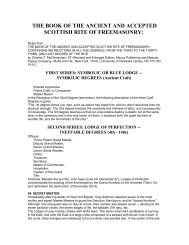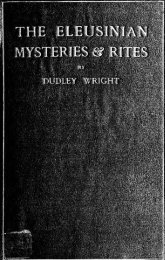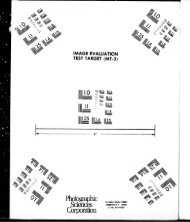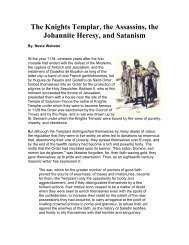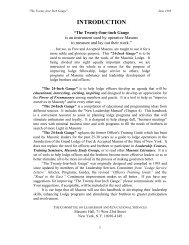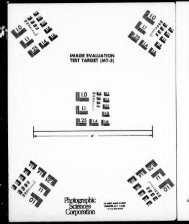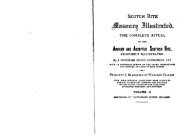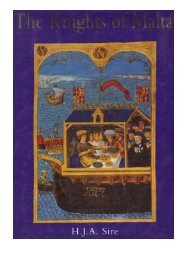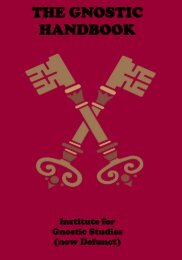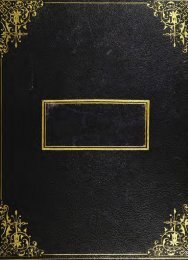The History of Initiation - The Masonic Trowel
The History of Initiation - The Masonic Trowel
The History of Initiation - The Masonic Trowel
You also want an ePaper? Increase the reach of your titles
YUMPU automatically turns print PDFs into web optimized ePapers that Google loves.
IN HINDOOS TAN. 43<br />
the usual emblems <strong>of</strong> eternity and uncontrollable power, 90<br />
the circle, 91 and fire. 92<br />
Satarupa perceived his situation, and stepped aside to avoid his<br />
ardent looks. Brahma, being unable to move, but still desirous to<br />
see her, a new face sprang out upon him towards the object <strong>of</strong> his<br />
desires. Again she shifted her situation, and another face emanated<br />
from the enamoured god. Still she avoided his gaze, until the incarnate<br />
deity, become conspicuous with four faces directed to the four<br />
quarters <strong>of</strong> the world, beheld her incessantly, to whatever side she<br />
withdrew herself. At length she recovered her self-possession, when<br />
the other half <strong>of</strong> his body sprang from him, and became Swayambhuva<br />
or Adima. Thus were produced the first man and woman, and<br />
from their embrace were born three sons, in whom the Trimurti<br />
became incarnate."<br />
90 Maur. Ind. Ant., vol. v., p. 852.<br />
91 <strong>The</strong> Circle or King was received as an expressive symbol <strong>of</strong> the<br />
Ark all over the world ;<br />
and as the great Father was hidden within its<br />
enclosure during the prevalence <strong>of</strong> the diluvian waters, many fables<br />
sprang out <strong>of</strong> this connection. I shall mention only one, the mysterious<br />
Ring <strong>of</strong> Gyges, which was reputed to render the wearer invisible.<br />
*<br />
Gyges, according to Plato, found a brazen horse in a cavern.<br />
Within the horse was hid the body <strong>of</strong> a man <strong>of</strong> gigantic stature,<br />
having a brazen ring on his finger. This ring Gyges took, and<br />
found that it rendered him invisible. <strong>The</strong> cavern, the ring, and the<br />
giant, show pretty evidently whence this fable originated.<br />
<strong>The</strong> mare<br />
was a form <strong>of</strong> Ceres or Hippa, the mystic nurse <strong>of</strong> the ark-exposed<br />
Bacchus or Noah the ; man, therefore, was the Ark. <strong>The</strong> dead giant<br />
was the gigantic Buddha, or the great father, during the period <strong>of</strong><br />
his death-like slumber while enclosed within the ark. And the<br />
cavern was one <strong>of</strong> those sacred grottoes, within which the mysteries<br />
were perpetually celebrated ; and from which both he and his initiated<br />
votaries were feigned to be born again." (Fab. Pag. Idol., vol. ii., p.<br />
440, in riota. 1.<br />
93 "<br />
Suddenly a golden temple appeared, containing a chain <strong>of</strong><br />
wrought gold. On the summit <strong>of</strong> the temple Brahma alighted, and<br />
held a canopy over the head <strong>of</strong> Sacya ;<br />
while Indra, with a fan in his<br />
hand ; Naga, prince <strong>of</strong> serpents, and the four tutelary deities <strong>of</strong> the<br />
four corners <strong>of</strong> the universe, attended to do him reverence and<br />
service."<br />
(Asiat. Res., vol. ii., p. 385.)



